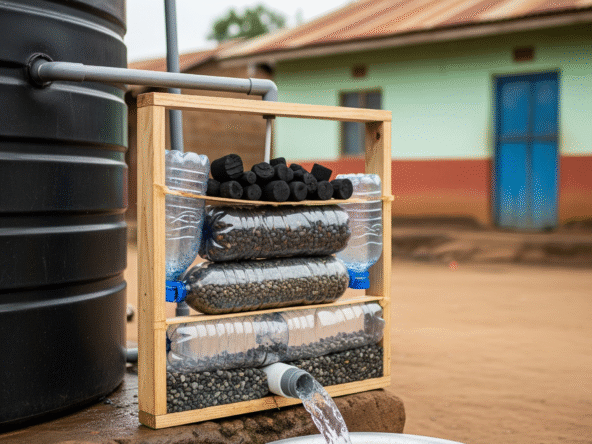Many homes and farms in Kenya rely on pumps to deliver water from storage tanks to taps, showers, or irrigation points. But when a tank runs low and the pump keeps running, it can lead to dry-run damage, overheating, and costly breakdowns. That’s why every water system should include an emergency low-level shutoff system to protect both the pump and the plumbing.
This article explores how these systems work, their types, where they’re used, and how they fit into a broader smart water management setup.
1. What Is a Low-Level Shutoff System?
A low-level shutoff system automatically cuts power to your pump or closes the outlet when the water level in your tank drops below a set point. This prevents:
- Pump burnout
- Motor overheating
- Water hammering or suction damage
- Unnecessary energy waste
These systems are particularly useful in gravity-fed systems, where unregulated flow can cause water loss. Learn more in Gravity-Fed Tank Setups in Kenya.
2. Common Types of Low-Level Shutoff Systems
| Type | Function | Recommended Use |
|---|---|---|
| Float Switch | Cuts pump when float drops below threshold | Overhead or underground tanks |
| Pressure Switch | Detects pressure drop in flow line | Borehole systems and pump circuits |
| Electronic Sensors | Conductivity or optical water-level detection | Smart home or irrigation systems |
| Combined Timer + Sensor | Pairs automation with real-time shutoff | Large farms, remote homes |
Pairing float switches with timers improves system automation. See Tank Refill Automation Using Float Switches for a detailed setup.
3. Why Low-Level Shutoff Matters
Even a mid-sized pump can drain a 2000-litre tank in minutes. If left running dry:
- The pump overheats
- Bearings and seals wear out
- Suction can introduce airlocks, causing further damage
This risk increases with solar-powered pumps, which may run unsupervised. See Troubleshooting Common Solar Pump Problems to understand the implications of unattended use.
4. Ideal Locations for Shutoff Installations
Low-level protection is essential in:
- Main water tanks serving the house or compound
- IBC tanks used in IBC Tank Systems
- Backup water tanks that refill automatically
- Multi-tank installations with linked storage, such as Multi-Tank Linking Systems in Kenya
5. Installation Tips for Better Performance
- Set your float or sensor at least 10–15 cm above the tank bottom
- Use sealed enclosures for wiring and electronics
- Add manual override in case of emergency usage
- Place inside lockable shelters, as shown in Tank Shelters and Lockable Enclosures
6. Price Guide in Kenya (2025)
| Component | Estimated Price (KSh) |
|---|---|
| Mechanical Float Switch | 500 – 1,000 |
| Electronic Sensor | 1,500 – 3,000 |
| Smart Timer with Sensor | 3,000 – 8,000 |
| Pressure Switch Unit | 2,000 – 4,500 |
Choose a shutoff solution based on tank size, type of pump, and level of automation desired.
7. Maintenance and Safety Checks
- Test your shutoff trigger monthly by simulating a low-level condition
- Clean sensor tips and float arms to prevent blockages from algae or sediment
- Use weatherproof connectors to avoid shorts from moisture
- Keep your tank clean using steps in How to Clean and Maintain Household Tanks
A low-level shutoff system is a simple, affordable way to protect your water pump investment. Whether your water comes from an IBC, overhead tank, or borehole, adding this one feature could save thousands in repair costs and ensure water is used more responsibly.
For full water automation, pair with smart pump timers, booster pumps, and float valves especially if you’re off-grid or manage multiple properties.
Explore More:


